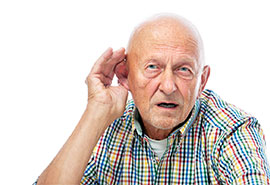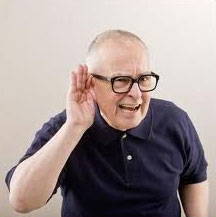
Sudden hearing loss (SHL), as the name suggests, is a disease in which hearing is suddenly impaired. This disease is medically defined as sensorineural hearing loss of at least 30 dB (unit of sound intensity) at at least 3 consecutive frequencies, occurring in less than 3 days.
In addition to hearing loss, the patient with SHL may feel buzzing, blockage, ringing in the affected ear, and sometimes dizziness may occur. SHL is a disease of unknown cause in 85-90% of cases. Vascular and viral causes, rupture of the inner ear membranes, autoimmunity (destruction of one's own body by the immune system) and tumors are among the factors suggested in the emergence of this disease. Although it is known that this disease can heal on its own in approximately 1/3 to 2/3 of the cases, it has been revealed that the chance of recovery is lower in patients with severe hearing loss, dizziness and whose treatment is not started within the first 2 weeks.
In the examination of the patient with the above-mentioned complaints, first of all, it is confirmed that the external ear canal and eardrum are normal. In the hearing test, the hearing loss in the affected ear, the degree of this loss and which frequencies it affects (low tones, high tones or all tones) are revealed. Some blood tests can be done to reveal vascular and metabolic factors in the patient. An MRI can reveal whether there is a tumor originating from the auditory-balance nerve. This is extremely rare. While a tumor called 'Acoustic Neuroma' can be detected in an average of one hundred SHLs, the tumor may occur in approximately 10 out of 100 Acoustic Neuroma patients. If the patient in question is a child, an ear tomography can be performed to reveal whether there is an anatomical abnormality in the inner ear structures.
Many drugs such as vasodilators, anti-virals, vasoactive agents, vasodilating serums have been tried in the treatment of AIC. However, among these, there are two treatments that are the most scientifically agreed upon: Cortisone therapy and Hyperbaric Oxygen Therapy.
Although cortisone can be administered intravenously, as a pill or as an injection into the middle ear, it is preferably given as a pill in standard practice. It is started at a dose of 1mg/kg, tapered and discontinued within 2-3 weeks. Cortisone can have some side effects such as increasing blood sugar level, raising blood pressure, causing heartburn or worsening an existing ulcer, and osteoporosis. For this reason, it should be used with extreme caution in those with diabetes, high blood pressure, stomach ulcers or osteoporosis. Such patients may also be consulted by an Internal Diseases Specialist before treatment. The patient receiving cortisone treatment is told to eat without salt and a proton pump inhibitor is prescribed along with the cortisone. Today, patients are treated as outpatients rather than hospitalized as much as possible. Because patients are happier at home! However, if the patient has severe dizziness, he or she may be hospitalized to control blood sugar until this dizziness is under control or if he or she has a severe Diabetes and blood sugar level control is very difficult.

Cortisone injection into the ear is a method that has become popular in recent years. The aim here is that the cortisone given to the middle ear is absorbed through the structure called the round window and passes into the inner ear and shows the desired effect there. For this, different application methods and regimens have been described. In my personal practice, I apply a local anesthetic ointment to the patient's ear about half an hour before the application. Then I lay the patient on the examination table and under the microscope, I pass the eardrum with a fine needle and inject cortisone into the middle ear. I try to increase the passage of the drug into the inner ear by keeping the patient's head facing the opposite side for about 20 minutes. I apply this process three times a week, a total of 6 times. Although this treatment has side effects such as otitis media or a hole in the eardrum, which are mentioned in the literature, these side effects are extremely rare. This treatment can also be done while the patient goes to Hyperbaric Oxygen sessions. In patients where cortisone cannot be used in pill form due to its side effects, or if the classical treatment has not achieved good results, the injection of cortisone into the ear has broken new ground in order to give the patient another chance to save the ear, and positive results are reported with this treatment.
Hyperbaric Oxygen Therapy is carried out by breathing 100% oxygen in sessions under high pressure in a special cabin, and it can be applied as standard for 20 sessions, maximum 40 sessions. It is generally well tolerated by patients. Rarely, it can cause a side effect called 'barotrauma' in the ears due to pressure.
In the light of scientific data, it is extremely important to try to 'save' the ear with the above-mentioned treatments before saying, 'This ear has no chance to heal any more', especially in a patient who is completely deaf in one ear or has a near-total severe hearing loss. Even the result of the treatment in some patients with such severe hearing loss is just limited to obtain an ear which can benefit from a hearing aid, this can be considered a significant improvement!


